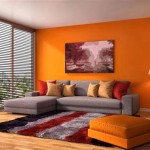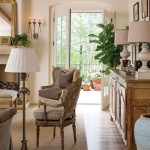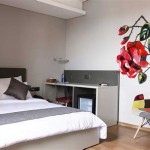Room Decoration With Flowers
Flowers possess a unique ability to transform a living space. Their vibrant colors, varied textures, and captivating fragrances can enhance any room's aesthetic appeal, creating a more welcoming and pleasant environment. From simple bud vases to elaborate floral arrangements, incorporating flowers into room décor offers a versatile approach to interior design.
Choosing the right flowers is fundamental to successful room decoration. One should consider the room's existing color palette and overall style. For example, bold, brightly colored flowers like sunflowers and gerberas can energize a minimalist space, while pastel-toned blooms such as roses and hydrangeas lend a softer touch to a more traditional setting. The size and scale of the flowers should also be taken into account. Large, dramatic blooms like lilies or protea can serve as focal points, while smaller, delicate flowers like baby's breath or sweet peas create a more subtle and airy feel.
Beyond aesthetics, the symbolic meaning of flowers can also play a role in room decoration. Roses, often associated with love and romance, might be a fitting choice for a bedroom, while lilies, symbolizing purity and elegance, could enhance a living room or dining area. Certain flowers, like lavender, are also known for their calming properties and can be a suitable addition to a bedroom or bathroom.
Various techniques and vessels can be employed to display flowers effectively. Simple glass vases are a classic and versatile option, allowing the flowers to take center stage. Alternatively, ceramic vases, metal pitchers, or even repurposed containers like teacups or mason jars can add a unique and personalized touch. For a more rustic or natural aesthetic, consider using woven baskets or wooden boxes as containers.
The placement of floral arrangements within a room is crucial. A strategically placed centerpiece on a dining table can instantly elevate the room's formality, while a small bouquet on a bedside table can create a sense of tranquility. Grouping several smaller vases together can also create a visually appealing display. Consider using varying heights and textures to create a sense of depth and dimension. Shelves, windowsills, and mantelpieces also provide excellent locations for showcasing floral arrangements.
Maintaining the freshness of cut flowers is essential to prolonging their decorative impact. Trimming the stems at an angle and changing the water regularly are fundamental steps. Adding flower food to the water can also help to nourish the blooms and prevent bacterial growth. Positioning flower arrangements away from direct sunlight and heat sources can further extend their lifespan.
Beyond cut flowers, incorporating potted plants and flowering houseplants offers a longer-lasting approach to floral room decoration. Orchids, peace lilies, and African violets are popular choices for their aesthetic appeal and relatively low maintenance requirements. These living floral elements not only add beauty to a room but also contribute to improved air quality.
Dried flowers and preserved botanicals provide another avenue for incorporating floral elements into room décor. These options offer a long-lasting alternative to fresh flowers and can be incorporated into wreaths, garlands, or decorative arrangements. Dried flowers can also be used to create unique artwork or wall hangings, adding a touch of vintage charm to a space.
Creating a cohesive look with floral decorations requires consideration of the overall design scheme. The style of the floral arrangements should complement the existing furniture, textiles, and artwork. For example, a minimalist room might benefit from a single, striking floral arrangement, while a more eclectic space could accommodate a variety of different floral elements.
Seasonal floral decorations can also enhance a room's ambiance. During the spring months, tulips, daffodils, and hyacinths can bring a sense of freshness and renewal. Summer blooms like sunflowers, daisies, and zinnias can evoke a feeling of warmth and vibrancy. In the fall, chrysanthemums, dahlias, and autumn leaves create a cozy and inviting atmosphere. During the winter, evergreen boughs, poinsettias, and amaryllis can add a touch of festive cheer.
Floral decorations offer an accessible and versatile means of personalizing and enhancing any living space. By carefully considering factors such as color, size, placement, and overall design scheme, one can effectively utilize flowers to create a more beautiful and welcoming environment.
Incorporating fragrant flowers can also add another dimension to room decoration. The scent of flowers can have a significant impact on mood and atmosphere. For example, the calming fragrance of lavender can promote relaxation, while the invigorating scent of citrus blossoms can energize a space. When selecting fragrant flowers, consider the overall desired ambiance of the room.

Room Decoration With Flowers

Room Decoration With Flower Ideas For The D Day Inspiration

Wedding Night Room Decoration With Flowers

7 Amazing Flower Arrangements For The Wedding Night

8 Best Flower Bedroom Ideas Wedding Room Decorations Night Bed

Best Flower Decoration Ideas For Home

Book Romantic Room Decoration With Flowers At Home

Room Flowers Decorations

7 Amazing Flower Arrangements For The Wedding Night

Wedding Room Decoration Ideas 2025 Bridal Bad Bedro In Decorations Night Flower Decor







